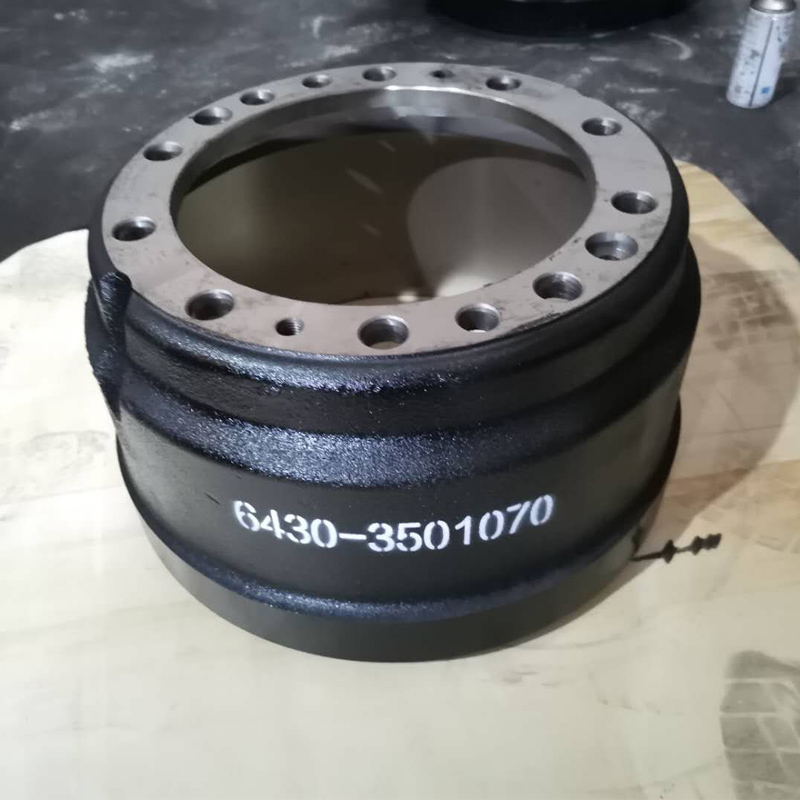Okt . 13, 2024 15:47 Back to list
brake drum grinding
Understanding Brake Drum Grinding Importance, Process, and Best Practices
Brake systems are vital for the safety and functionality of vehicles, and maintaining them is essential for optimal performance. One of the critical components of the braking system is the brake drum, particularly in vehicles with drum brake systems. Over time, brake drums may wear down, leading to poor braking performance, which necessitates a process known as brake drum grinding. This article aims to explain the importance of brake drum grinding, the process involved, and best practices for achieving satisfactory results.
Importance of Brake Drum Grinding
Brake drums play a crucial role in the braking system. They house the brake shoes, which press against the drum to create friction and slow down the vehicle. However, as with any mechanical component, brake drums can suffer from wear and tear. This wear can result from various factors, including excessive heat, corrosion, imbalanced braking forces, and prolonged use of worn brake shoes. When brake drums become uneven or develop grooves, it can lead to a noticeable decline in braking efficiency, causing issues such as brake noise, vibration, and even potential brake failure.
Grinding the brake drums restores their original shape, surface finish, and structural integrity. This process removes any irregularities, ensuring that the brake shoes make full contact with the drum surface, which enhances braking performance. A properly ground brake drum can improve safety, extend the life of both the drum and the brake shoes, and reduce the likelihood of costly repairs.
The Process of Brake Drum Grinding
The brake drum grinding process involves several key steps
1. Removal The first step is to remove the wheel and brake drum from the vehicle. This requires proper tools and safety precautions, as brake components can be heavy and awkward to handle.
2. Inspection Once removed, the drum should be thoroughly inspected for any signs of damage, such as cracks, excessive corrosion, or warping. If the drum is severely damaged, it may need to be replaced rather than ground.
3. Setup for Grinding The drum is then attached to a lathe or a brake drum grinder. Proper alignment is crucial to ensure an even grind.
4. Grinding Process The grinder uses a cutting tool to shave off a thin layer of material from the drum's surface. Consistent pressure and speed are vital to avoid creating uneven surfaces. The goal is to produce a smooth and uniform travel path for the brake shoes.
brake drum grinding

5. Measurement After grinding, the drum’s diameter is measured to ensure it meets manufacturer specifications. The standard limits should not be exceeded, or else the drum may not function effectively.
6. Finishing Touches Finally, the ground drum is cleaned and inspected again to ensure it is free from debris and rough edges that could affect performance.
7. Reinstallation Once grinding is complete and everything has been checked, the drum can be reassembled with the brake shoes and returned to the vehicle.
Best Practices for Brake Drum Grinding
To achieve the best results when grinding brake drums, consider the following best practices
- Use Quality Equipment Ensure that grinding equipment is well-maintained and calibrated to guarantee precision during the grinding process. - Follow Manufacturer Specifications Always adhere to the manufacturer's guidelines regarding the acceptable limits for drum wear and diameters after grinding.
- Inspect Components Regularly Regular inspections can prevent excessive wear and identify issues early, allowing for proactive maintenance.
- Consider Professional Services If you’re not experienced with brake drum grinding, consider seeking professional help. Mechanics have specialized tools and expertise to ensure an effective and safe grinding process.
- Pair with Quality Brake Shoes After grinding, it is advisable to install new brake shoes to ensure optimal performance and prevent premature wear.
In conclusion, brake drum grinding is a necessary process to maintain the efficiency and safety of a vehicle's braking system. Understanding its importance, following the correct procedures, and adhering to best practices are essential for ensuring effective and safe braking performance. By prioritizing brake drum maintenance, drivers can significantly enhance their vehicle's safety and reliability on the road.
-
Brake Drum Liza High-Quality Drum Brake & Shoe Solutions
NewsMay.29,2025
-
Brake Drum Liza Durable Drum Brake & Shoe Solutions for Vehicles
NewsMay.29,2025
-
Brake Drum Liza Premium Drum Brake Components & Shoes
NewsMay.29,2025
-
Brake Drum Man Durable Drum Brake Drums & Shoes Supplier
NewsMay.28,2025
-
Liza Brake Drum & Shoes Durable Drum Brake Components
NewsMay.28,2025
-
Brake Drum Man Premium Brake Drums & Shoes for Heavy-Duty Vehicles
NewsMay.28,2025
